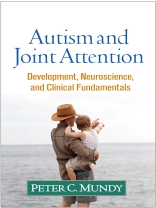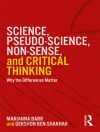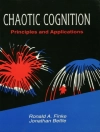From a preeminent researcher, this book looks at the key role of joint attention in both typical and atypical development. Peter C. Mundy shows that no other symptom dimension is more strongly linked to early identification and treatment of autism spectrum disorder (ASD). He synthesizes a wealth of knowledge on how joint attention develops, its neurocognitive underpinnings, and how it helps to explain the learning, language, and social-cognitive features of ASD across the lifespan. Clinical implications are explored, including reviews of cutting-edge diagnostic methods and targeted treatment approaches.
Зміст
1. A Brief History of the Concept of Autism
*Autism and the Myth of the Unresponsive Child
*The Demise of the Unresponsive Prototype
*The Dimensional Approach to the Social Nature of Autism
*The Fuzzy Nature of Human Nature
*The Moderator Model of Autism
2. The Dimension of Joint Attention and ASD Diagnosis
*Joint Attention and the Research Domain Criteria
*Joint Attention and the Evolution of the DSM Criteria for ASD
3. Joint Attention in Symptom Assessment and Risk Identification
*Joint Attention and Defining the Social Nature of Autism
*The Development of Clinical Measures of Joint Attention
*Applications of Joint Attention Measures to the Study of ASD
*Risk identification in Infant Siblings
*Joint Attention in Other Conditions
4. Joint Attention, Learning, and Social Cognition
*Joint Attention, Mentalizing, and Autism
*The Social-Cognitive Hypothesis of Joint Attention
*Joint Attention, Developmental Dissociations, and Timing
*An Alternative Theory of Joint Attention and Social Cognition
*Gender Differences and Joint Attention
*Joint Attention in Childhood
*Summary and Conclusion
5. Social Orienting, Joint Attention, and Social Motivation
*Three Questions about the Development of Joint Attention
*The Many Dimensions of the Social Phenotype of ASD
*When Does Joint Attention Develop?
*Joint Attention, Language Development, and Social Orienting
*Joint Attention and Cognitive Processing in Infancy
6. Early Intervention, Joint Attention, and ASD
*Models of Early Intervention
*Approaches to Joint Attention Intervention
*The JASPER Intervention
*Joint Attention and Intervention for Older Verbal Children
*Summary and Conclusions
7. Neurodevelopment of Joint Attention
*The Need for Caution in the Cognitive Neuroscience of ASD
*Choosing Dimensions in the Developmental Cognitive Neuroscience of ASD
*Evidence for the Neural Network of Joint Attention
*Imaging Studies of Joint Attention in Autism Spectrum Development
*The Overlap between the Joint Attention and Social-Cognitive Networks
*The Dynamic Development of Behavior and Social-Cognitive Neural Systems
*A Functional Appraisal of the Joint Attention Neural Network
*Summary and Conclusions
8. The Genetics of Joint Attention and Joint Engagement
*Joint Attention/Joint Engagement, Motivation, and Molecules
*The Genetics of JAJE: An Overview
*QTL Linkage and Joint Attention
*Oxytocin and Vasopressin Pathways and Joint Attention
*Animal Models of Joint Attention
*Joint Attention, Gene Interactions, and Genetic Repurposing
*Informing the Dimensional Approach to Autism
References
Index
Про автора
Peter C. Mundy, Ph D, is Professor and Lisa Capps Endowed Chair of Neurodevelopmental Disorders and Education in the School of Education and the Department of Psychiatry and Behavioral Sciences at the University of California, Davis (UC Davis). He is also Director of Educational Research at the UC Davis MIND Institute. A developmental and clinical psychologist, Dr. Mundy has been working on defining the nature of autism and developmental disabilities for over 30 years. An author of the Early Social Communication Scales, which was selected by Autism Speaks as a recommended measure for clinical trials, he is an associate editor of
Autism Research and serves as an editorial board member or consulting editor for numerous other journals.












